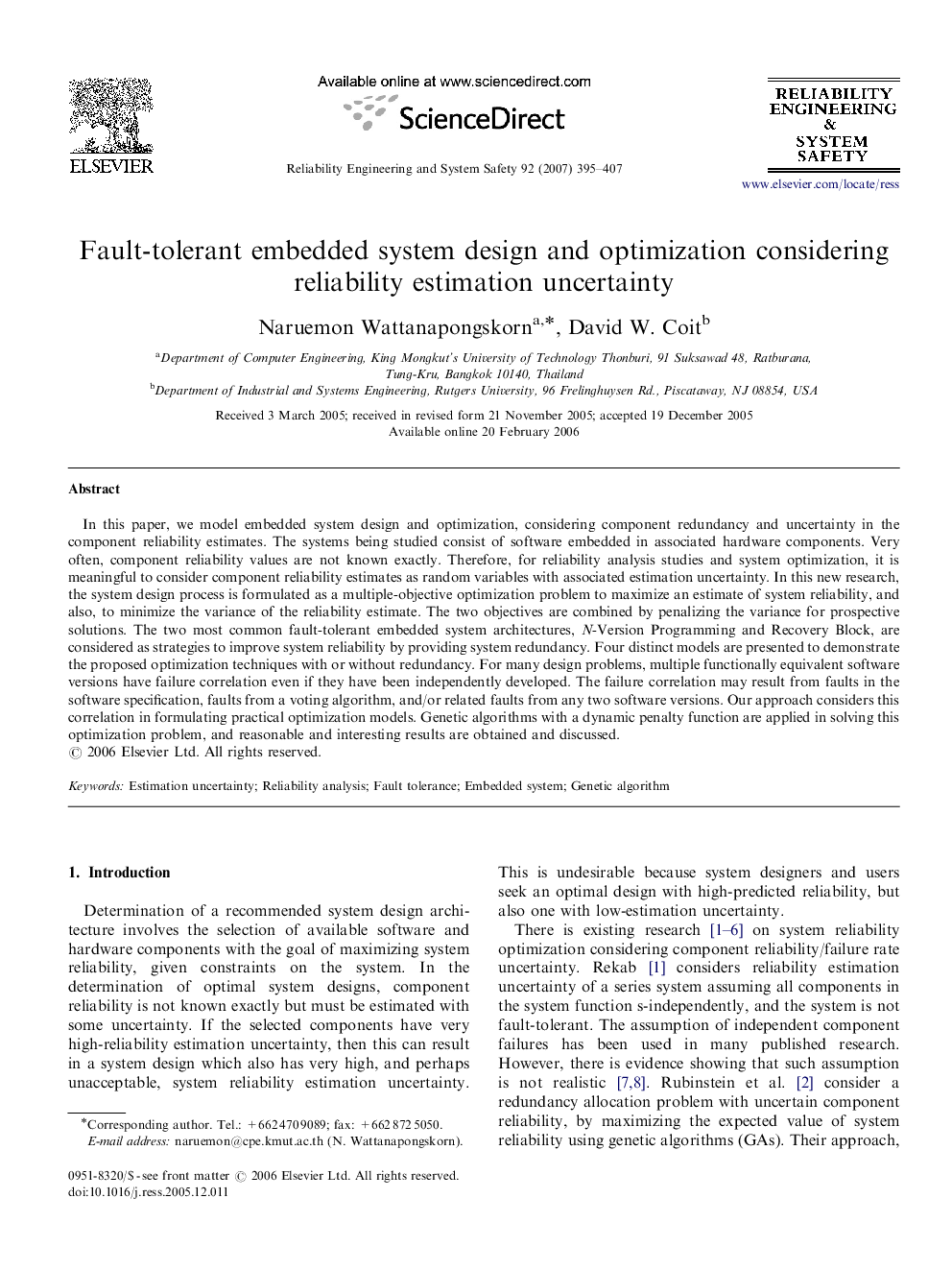| Article ID | Journal | Published Year | Pages | File Type |
|---|---|---|---|---|
| 808443 | Reliability Engineering & System Safety | 2007 | 13 Pages |
In this paper, we model embedded system design and optimization, considering component redundancy and uncertainty in the component reliability estimates. The systems being studied consist of software embedded in associated hardware components. Very often, component reliability values are not known exactly. Therefore, for reliability analysis studies and system optimization, it is meaningful to consider component reliability estimates as random variables with associated estimation uncertainty. In this new research, the system design process is formulated as a multiple-objective optimization problem to maximize an estimate of system reliability, and also, to minimize the variance of the reliability estimate. The two objectives are combined by penalizing the variance for prospective solutions. The two most common fault-tolerant embedded system architectures, N-Version Programming and Recovery Block, are considered as strategies to improve system reliability by providing system redundancy. Four distinct models are presented to demonstrate the proposed optimization techniques with or without redundancy. For many design problems, multiple functionally equivalent software versions have failure correlation even if they have been independently developed. The failure correlation may result from faults in the software specification, faults from a voting algorithm, and/or related faults from any two software versions. Our approach considers this correlation in formulating practical optimization models. Genetic algorithms with a dynamic penalty function are applied in solving this optimization problem, and reasonable and interesting results are obtained and discussed.
